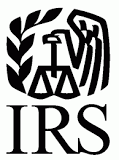On March 18, 2020 the President signed the “Families First Coronavirus Response Act”, H.R. 6201, which passed the Senate that same day and the House a day earlier. Among other provisions, the Act includes two acts imposing employee benefits requirements on employers with less than 500 employees: the Emergency Family and Medical Leave Expansion Act, and the Emergency Paid Sick Leave Act, as well as tax credits to offset the costs imposed on employers by those two acts.
This post summarizes the two new employee benefits acts. Both acts are effective as of April 1, 2020 (15 days after the enactment of the legislation), and both acts will sunset on December 31, 2020.
The tax credits that employers will be eligible to receive are designed to offset most of the direct costs imposed by these Acts. The tax credits will be applied as a refundable credit against the employer’s quarterly FICA (Medicare and Social Security) taxes. We will provide further update on the tax credits in due course. For now we are focused on assisting employers to comply with the Act’s requirements by April 1.
The Emergency Family and Medical Leave Expansion Act (EFMLEA)
The EFMLEA amends FMLA to add paid and unpaid FMLA leave for certain employees effective from April 1, 2020 until December 31, 2020, related to the Coronavirus pandemic.
When and to Whom does EFMLEA Apply?
The EFMLEA applies only if all the following circumstances apply:
- an employee who has been employed for at least 30 days
- by an employer that employs fewer than 500 employees*
- requests leave because the employee is unable to work (or telework) due to a need for leave to care for the son or daughter under 18 years of age of the employee if (i) the school or place of care has been closed, or (ii) the child care provider of such son or daughter is unavailable, due to an emergency with respect to COVID-19 declared by a Federal, State, or local authority.
The EFMLEA is effective April 1, 2020 and will sunset on December 31, 2020.
An employer of an employee who is a health care provider or an emergency responder may elect to exclude such employee from the application of the EFMLEA.
Some notes on the above:
FMLA generally does not apply to employers that employed less than 50 employees during 20 or more workweeks during the current or preceding year. Therefore, the EFMLEA is both broader (applies down to employers with 1 employee), and narrower (does not apply to employers with 500 or more employees) than FMLA.
EFMLEA leave is not available for employees generally who are asked to stay home due to general business closures, reductions in force or other disruptions caused by the Coronavirus pandemic. EFMLEA leave only applies to leave to care for a son or daughter due to a school or child car closure due to a declared emergency related to the Coronavirus. For leave related to caring for ones-self or family members related to diagnosis with COVID 19, regular FMLA leave would still apply.
When is EFMLEA Leave Paid vs Unpaid?
EFMLEA leave is unpaid for the first 10 days. Under the EFMLEA, an employee may elect to substitute any accrued vacation leave, personal leave, or medical or sick leave for unpaid leave during these first 10 days. This means that employers may not deny employees who qualify for EFMLEA leave the use of accrued vacation, PTO and Arizona Paid Sick Time (PST) during the first 10 days of such leave.
After the first 10 days, EFMLEA leave is paid leave under the Act, for the duration of the leave (up to 12 weeks).
During paid EFMLEA leave, employees must be paid an amount not less than 2/3 their regular rate of pay, as determined under the Fair Labor Standards Act, multiplied by the number of hours the employee would otherwise be normally scheduled to work. There are detailed provisions for determining the number of hours normally worked for employees whose schedule varies from week to week such that the employer cannot determine exactly how many hours they would have worked during the applicable week. In no event shall such paid leave exceed $200 per day and $10,000 in the aggregate.
What About Job Restoration Rights?
FMLA generally requires reinstatement after the end of FMLA leave to the same or a substantially similar position. Those same rules will apply to EFMLEA leave, except in the case of employers that employ fewer than 25 employees. For such employers, the general FMLA job restoration rights will not apply to EFMLEA leave if all the following conditions are met:
- The position held by the employee when the EFMLEA leave commenced does not exist due to economic conditions or other changes in operating conditions of the employer that affect employment and that are caused by an emergency with respect to COVID-19 declared by a Federal, State, or local authority during the period of leave.
- The employer makes reasonable efforts to restore the employee to a position equivalent to the position the employee held when the leave commenced, with equivalent employment benefits, pay, and other terms and conditions of employment.
- If the reasonable efforts of the employer fail, the employer makes reasonable efforts to contact the employee if an equivalent position becomes available during the one year period beginning on the earlier of (i) the date the EFMLEA leave ends or (ii) the date that is 12 weeks after the EFMLEA leave begins
The Emergency Paid Sick Leave Act (EPSLA)
The EPSLA takes effect on April 1, 2020 (15 days after its enactment), and will sunset on December 31, 2020. The EPSLA requires employers that employ fewer than 500 employees to provide to each employee paid sick time (EPST) to the extent that the employee is unable to work (or telework) due to a need for leave because:
(1) The employee is subject to a Federal, State, or local quarantine or isolation order related to COVID-19.
(2) The employee has been advised by a health care provider to self-quarantine due to concerns related to COVID-19.
(3) The employee is experiencing symptoms of COVID-19 and seeking a medical diagnosis.
(4) The employee is caring for an individual who is subject to an order as described in subparagraph (1) or has been advised as described in paragraph (2).
(5) The employee is caring for a son or daughter of such employee if the school or place of care of the son or daughter has been closed, or the child care provider of such son or daughter is unavailable, due to COVID-19 precautions.
(6) other substantially similar conditions specified by the Secretary of Health and Human Services in consultation with the Secretary of the Treasury and the Secretary of Labor.
How Much EPST is Required?
Full-time employees are entitled to 80 hours of paid sick time. Part-time employees are entitled to a number of hours equal to the number of hours that such employee works, on average, over a 2-week period. EPST is available for immediate use after the effective date of the legislation, regardless how long an employee has been employed.
How Is Emergency Paid Sick Time compensated?
EPST is compensated based on the employee’s regular rate of pay under the FLSA multiplied by the number of hours the employee would otherwise be normally scheduled to work (subject to the same provisions as the EFMLEA for variable hour employees).
For sick time specified in paragraph (1), (2), or (3) (quarantine or seeking diagnosis for COVID 19), 100% of such regular pay is considered, subject to the overall limits set forth below. For sick time specified in paragraph (4), (5), or (6) (caring for others), only 2/3 of the employee’s regular rate of pay is considered.
In no event shall paid sick time exceed—
- $511 per day and $5,110 in the aggregate for a use described in paragraph (1), (2), or (3) (quarantine or seeking diagnosis for COVID 19) or
- $200 per day and $2,000 in the aggregate for a use described in paragraph (4), (5), or (6) (caring for others)
Not later than April 1, 2020, the Secretary of Labor shall issue guidelines to assist employers in calculating the amount of paid sick time under the Act.
Other notes regarding the EPSLA:
- EPST does not carry over from one year to the next.
- There are notice posting requirements, like with minimum wage and overtime requirements. The DOL will issue the required notice before April 1, 2020.
- Employers may not retaliate against employees for taking EPST.
- Enforcement of the requirement to pay EPST will be under the same provisions that apply under the FLSA for failure to pay minimum wages.
- The EPSLA shall not be construed to diminish the rights of an employee under an existing employer policy, or under other federal, state or local law.
There are a lot of issues that will arise as we implement these new requirements, including:
- adopting and implementing the necessary employer policies and procedures to comply,
- coordinating these acts with Arizona’s paid sick time law, and
- how other employer actions that will be taking place in the next few weeks and months, like reductions in force and reductions in hours, will be impacted by this legislation.
Rest assured we are here to help our clients deal with these issues. We will also keep updating our clients as the law develops in this area. In the meantime, as a partner of mine said during the 2009 economic crises, we just have to hold hands and stick together (virtually, of course).




